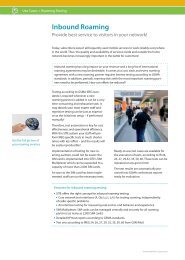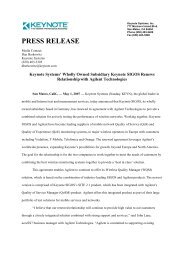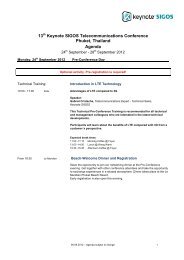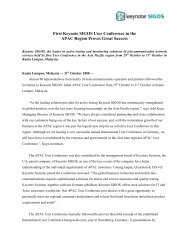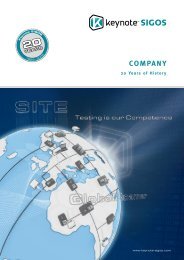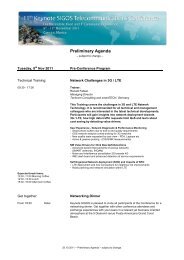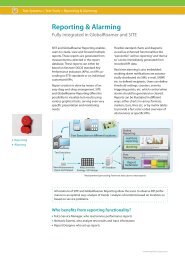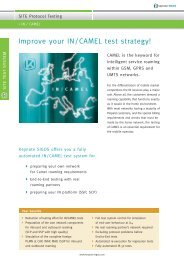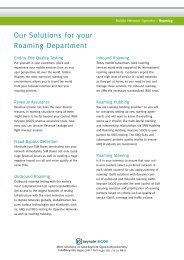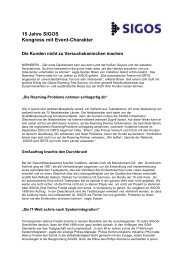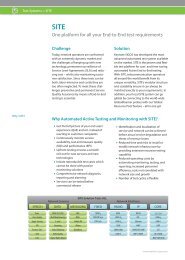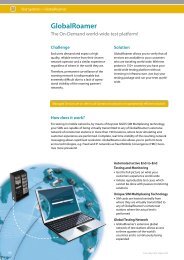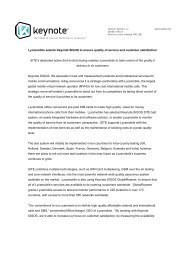You also want an ePaper? Increase the reach of your titles
YUMPU automatically turns print PDFs into web optimized ePapers that Google loves.
56<br />
Test Systems > Applications > Network Registration<br />
Network Registration<br />
Location Update<br />
GPRS Attach<br />
Network Registration<br />
Fundamental for all mobile services!<br />
Each mobile subscriber wants to be able<br />
to communicate in the cellular telecommunications<br />
network without having to<br />
consider whether the network technology<br />
is 2G, 2.5G or 3G.<br />
This requires a successful mobile device<br />
registration on the base station subsystem<br />
(BSS). This is always the � rst step for<br />
further communication.<br />
Even if a call is not set up, the network<br />
needs to be able to communicate with<br />
the mobile handset to pinpoint where it<br />
is. Hence, a mobile network is divided into<br />
multiple cells (Base (Base Transceiver Transceiver Stations -<br />
BTS). And a a group group of cells is considered a a<br />
location area.<br />
A A mobile device in in motion keeps the the<br />
network network informed about changes in di� di� erent<br />
location areas. If the handset moves<br />
from a a cell in one location location area to a cell in<br />
another location area, area, the mobile device<br />
should perform a location area update to<br />
inform the network about the new locatilocation of the mobile device.<br />
Each <strong>Keynote</strong> <strong>SIGOS</strong> test case requires this<br />
successful network registration.<br />
Sample KPIs<br />
Location Update Duration<br />
Received Signal Code Power<br />
RX Level<br />
Service Type<br />
GPRS Attach Duration<br />
PDP Context Activation Duration<br />
Location Update procedure is performed:<br />
when the mobile device has been<br />
switched o� and wants to become<br />
active, or<br />
when it is active but not involved in a<br />
call, and it moves from one location area<br />
to another, or<br />
after a regular time interval because of<br />
signal fade<br />
Some aspects of the registration procedure:<br />
make contact with the base station<br />
the mobile device registers to the<br />
network for access<br />
to start a voice and/or data session<br />
Network location registration is not<br />
only necessary for each call, but<br />
also for location based services like<br />
“friends-� nder”!<br />
www.keynote-sigos.com



